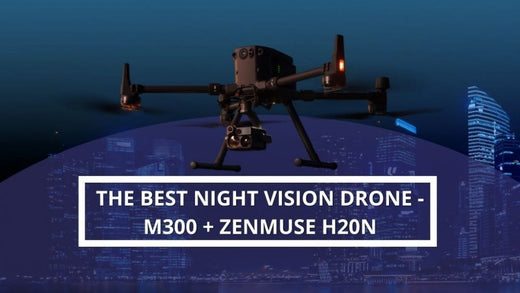
The Best Night Vision Drone - M300 + Zenmuse H20N
Share

This Powerful New Combo Shines A Light On Public Safety
When it comes to keeping the public safe, the job doesn't end when the sun sets. In fact, night time and low light conditions are when first responders are needed the most. From search and rescue operations to fighting crime, the need for night vision capabilities is critical to many public safety operations.
Drones have also proven to be critical tools in public safety. They provide an extra set of eyes in the sky and can help first responders quickly assess and respond to situations while providing valuable situational awareness.
Thermal Cameras vs Night Vision Cameras
Until recently, the use of drones in low light and completely dark conditions was somewhat limited to the technology available. While traditional night vision goggles and night vision cameras have been available for some time, there were few night vision drone solutions that were lightweight, and small enough to put on a gimbal. The use of a drone at night was often not an option- especially when paired with the traditionally available type of night vision.
The most common solution for night time drone operations were and continue to be thermal imaging cameras. Thermal cameras measure infrared light representing the heat signatures of objects. This data can then be translated into images. Unlike traditional visible or night vision cameras, thermal cameras do not read reflected light, also known as visible light.

The heat emitted from an object can be read by a thermal imaging camera even without a light source. Thermal cameras also have the benefit of being able to "see" through fog and smoke- which would limit the visibility on a drone's camera. This is why thermal drones have found such popularity in firefighting scenarios, where smoke and concealed hotspots either limit or are outside the range of vision for the types of drones used in traditional aerial photography.
However, thermal cameras on drones have their limitations. For example, surface temperature measurements from a thermal sensor might not always provide the desired information when conducting Search and Rescue operations. They are subject to interpretation, and rescue drone operators can be misled by environmental factors, while the relatively low resolution of a thermal camera can make different objects, clothing, and even people difficult to discern.
This is where the new Zenmuse H20N shines. The H20N is a multi-spectral sensor payload on a stabilized gimbal that not only captures thermal images, but also visible light and night vision imaging by amplifying ambient light in environments with not enough light for the human eye to see.
M300 RTK - The Best Night Vision Drone
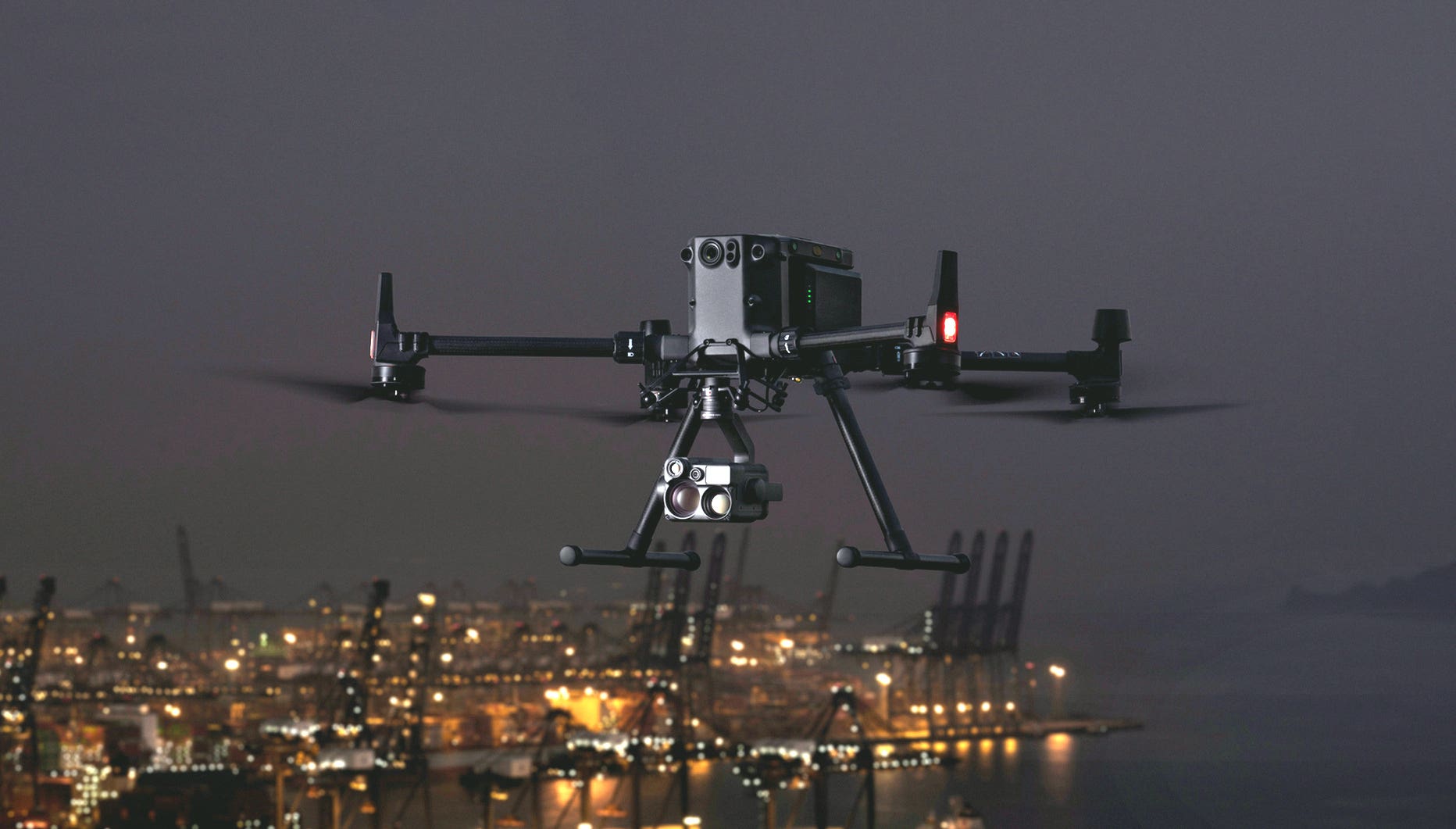
As a payload designed exclusively for the Matrice 300 RTK, DJI has effectively created the best drone for public safety operations with this powerful system. Combining the impressive battery life and flight time of the M300 with a single payload that combines the best features of a visible, thermal and low light camera with the distance measurement capabilities of the built in Laser Rangefinder, DJI has bested most other models of commercial drones available today- especially in the somewhat limited range of models suitable for the use of drones at night.
Let's take a closer look at the Starlight Sensor, and how it differs from the thermal cameras on other high end drones and devices.
Not All Night Vision Drones Rely On A Thermal Camera
The Starlight Sensors differ from the thermal sensors in how they work.
Let's take a look at how light is measured and how our eyes see in low-light situations. The level of light emitted by an object or environment is measured in Lux, which is expressed as a percentage (or the luminous flux per unit area). One lumen per square meter equals one lux. The human eye has difficulty detecting objects when the light intensity falls below 20 Lux.
The H20N's Starlight sensors have a wider aperture and slower shutter speed than traditional cameras, increasing the amount of light that can reach the sensor and improving quality in low-light situations. The sensor is used in conjunction with unique algorithms to minimize image noise and increase image quality.

The Starlight sensor is found on both the H20N's Zoom and Wide cameras. IR settings are modified and the lens' IR filter is enabled as soon as the H20N is switched to Night Mode. Using a powerful low-light enhancement algorithm, operators can register light sources as low as 0.0001 Lux, well beyond what the human eye can detect alone.
Operators will now be able to see targets and subjects in the darkness like never before, using the DJI M300 equipped with an H20N.
Night Vision and Thermal Camera Zoom
A 4MP 20x hybrid optical zoom camera incorporates the Starlight's night vision technology. This combination allows for a wide range of public safety and security applications, including locating missing people after dark, spotting intruders, and checking mines, construction sites, and other sensitive locations at night.
This device has the potential to revolutionize night-time search and rescue. In low-light conditions, high-resolution close-ups and unambiguous photographs promise to eliminate false positives, improve resource deployment decisions, and drastically reduce mission time.
Dual Thermal Imaging Cameras
The H20N boasts two 640x512 thermal sensors to transmit comprehensive infrared data, which is a nice compliment to the new Starlight capabilities. For increased flexibility, one of the infrared sensors has a 2x zoom, while the other has an 8x zoom. This makes the H20N one of the most versatile thermal sensors on the market.
A drone pilot can now keep the aircraft a safe distance away while still seeing exceptional imaging detail with the infrared cameras. This is critical for many different industries and commercial purposes
From Search and Rescue and industrial inspections to wildlife management, the combination of the M300 and H20N enables operators to assess whether a heat signature is an animal, a person, or anything else- all by utilizing advanced zoom features found on few other drones. When every second counts, this improved thermal sensing ability can save pilots critical time.
Better Together
Though each is impressive on their own, when the hybrid sensors are utilized together, the Zenmuse H20N's full potential is revealed.
By zooming in on a split-screen and using both the thermal and visual sensors at the same time, operators can make better observations in challenging circumstances. In low-light settings and when certainty is necessary before making operational decisions, this adaptability is crucial.
A Laser Rangefinder For Unmatched Precision
In addition to the visible and thermal imaging capabilities, the Laser Rangefinder is also carried over from the Zenmuse H20 and H20T to the H20N. With a detection range of 3-1200m, the rangefinder provides precise coordinates of a position or object to an accuracy of +/- 1 meter. The PinPoint feature provides this functionality at any time. Thanks to DJI's powerful sensor fusion algorithms, an object's GPS coordinates, distance from the aircraft, and height are all recorded in a single tap.
Because of the H20N's Starlight sensors, low light is no longer an issue while managing missions from above.
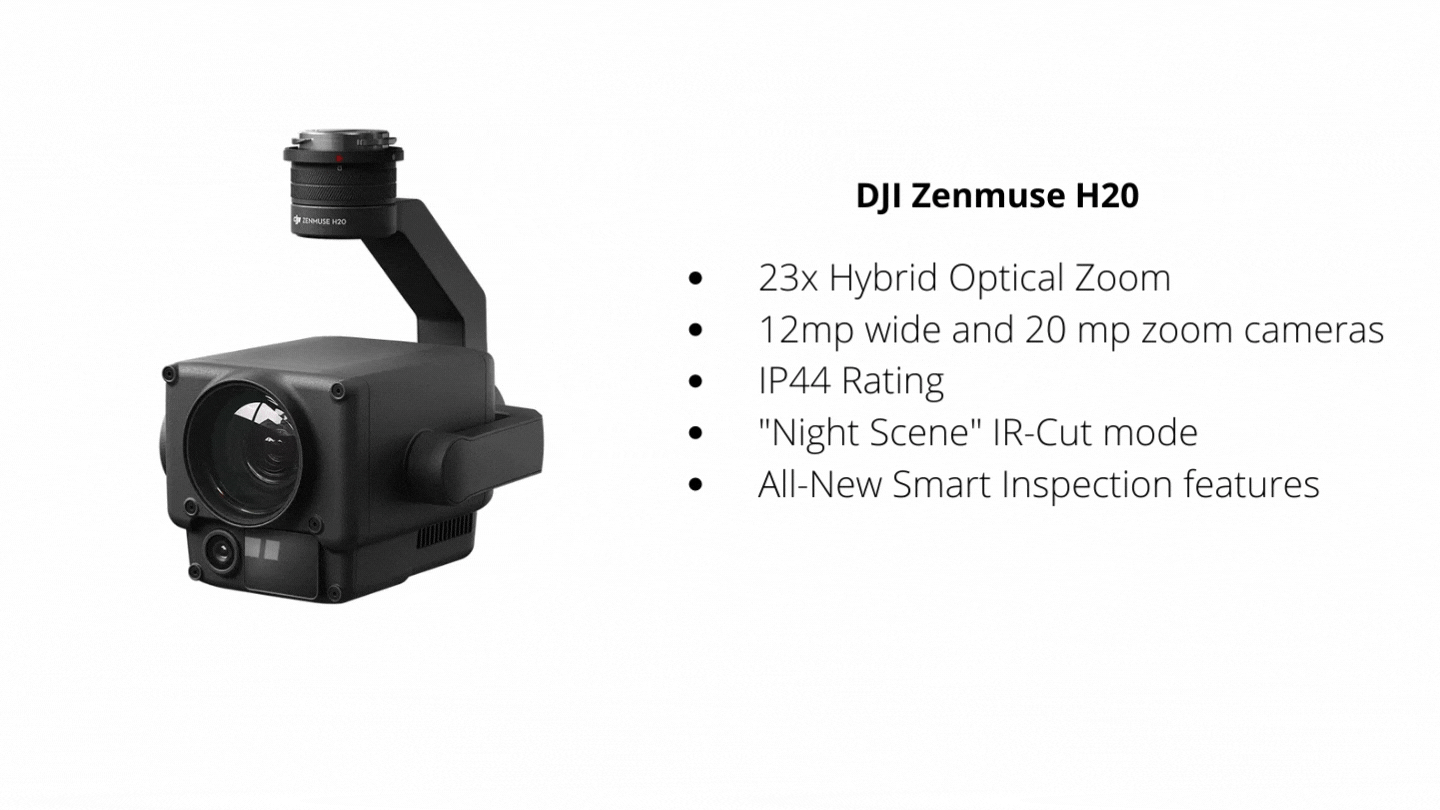
Built To Last
With no shortage of certain features not found on many drones, the DJI M300 RTK is well regarded as one of the most advanced and toughest drones on the market today. It's only natural that the most recent payload would follow suit in its ruggedness.
The H20N hybrid payload was designed to serve public safety and security activities in the most harsh weather situations, with an IP44 rating and the ability to function in temperatures ranging from 50º C to -20º C.
Payloads must be strong enough to endure any environment as drones become more significant instruments for emergency responders and inspection professionals. The H20N takes on this task full on.
Zenmuse H20N versus H20T
Which payload to get with the DJI Matrice 300 RTK? The H20N or the H20T?
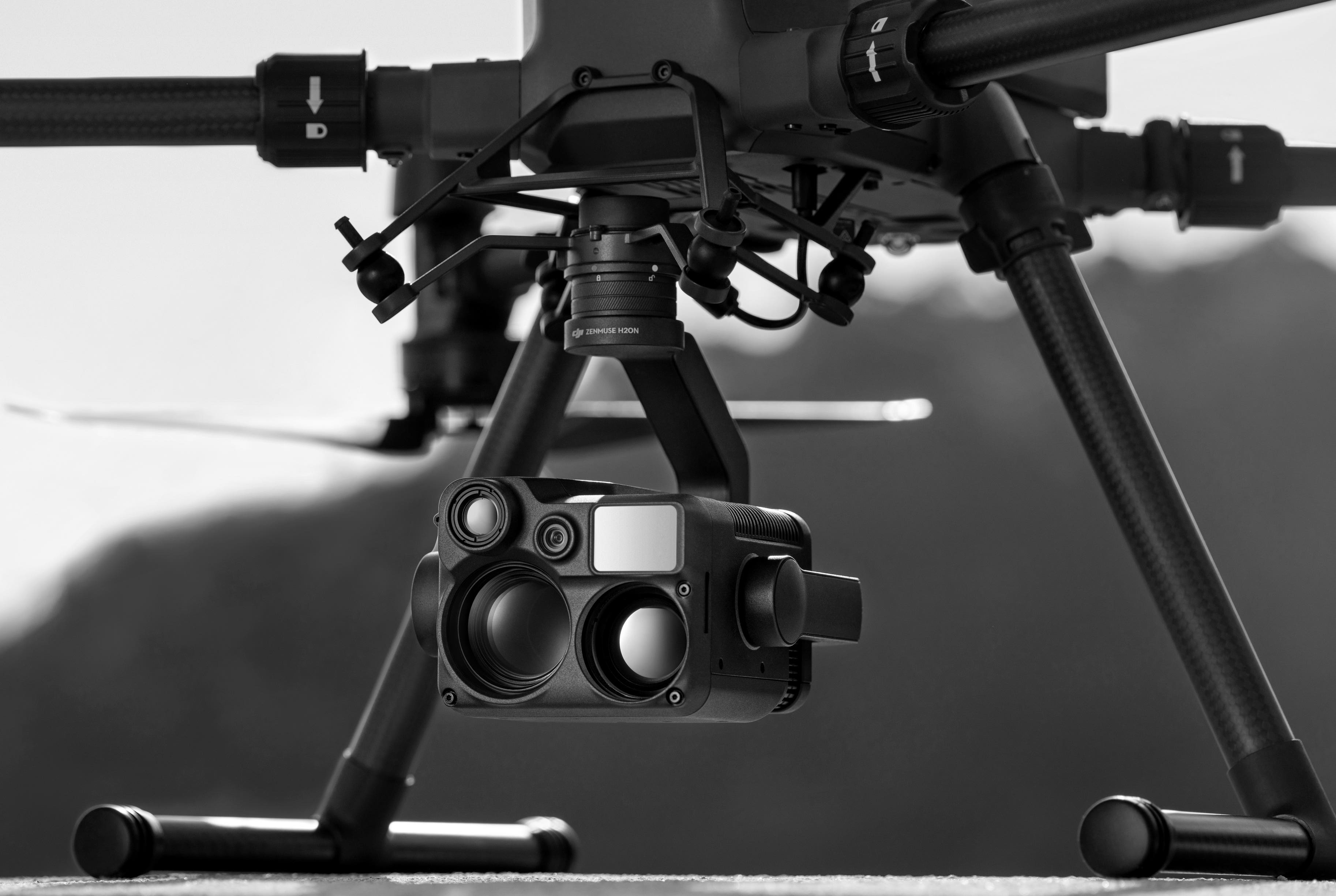
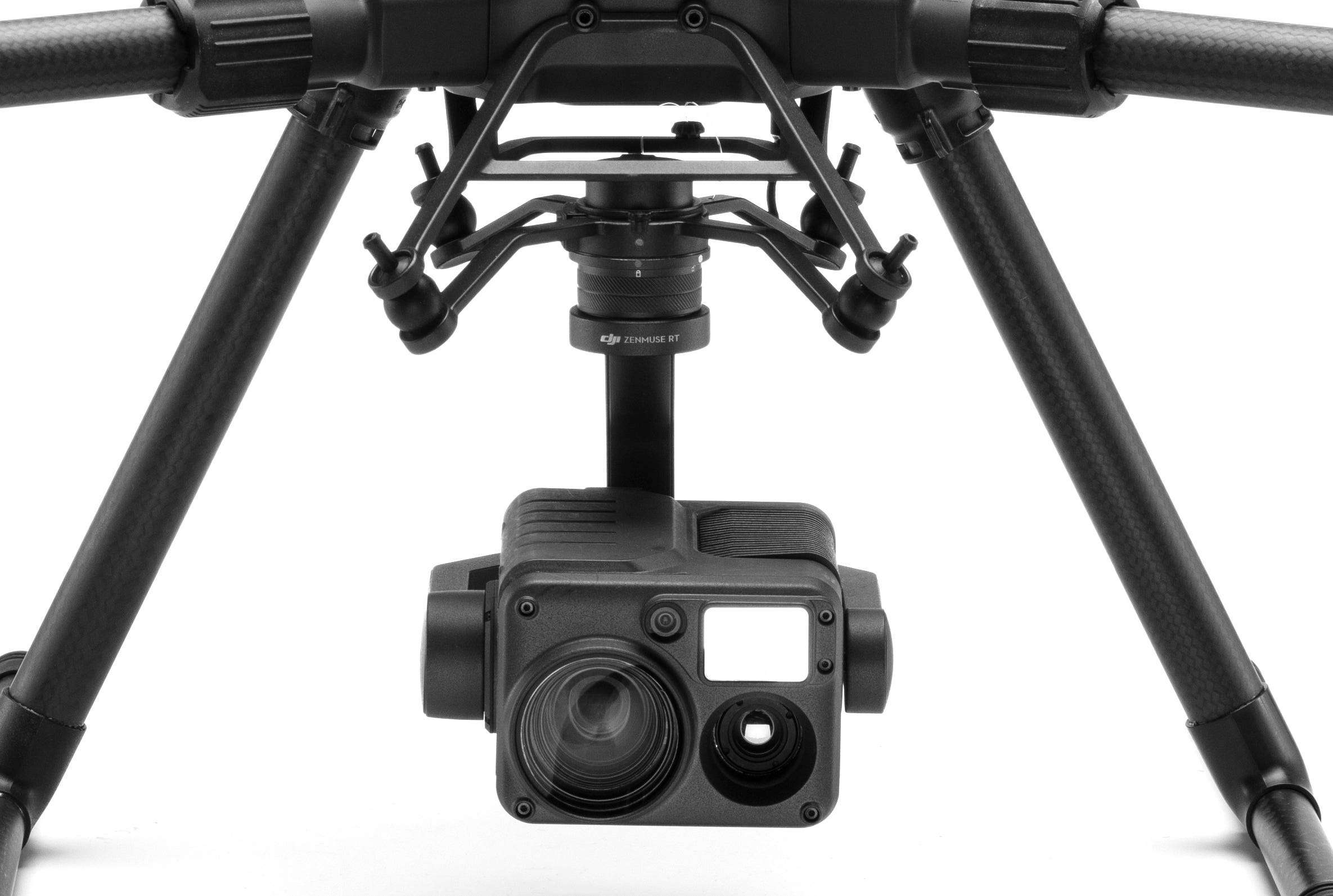
This is not an easy choice.
There are so many uses for a night vision drone, which the H20N delivers on. However, many use cases only require the use of visible and thermal imaging cameras, for which the H20T more than fits the bill.
In truth, many features are shared by the Zenmuse H20T and H20N. With a few slight alterations, they can be customized for a variety of mission scenarios.
Where does each of these cameras outshine the other?
When it comes to image quality and the ability to detect people or things in the dark, nothing beats the H20N. The Starlight sensors in both the Wide and Zoom cameras are far better suited for low-light scenarios than the hybrid camera solution in the H20T. The H20N's twin infrared cameras with hybrid zoom ability considerably expand the thermal sensor's viewing distance for far thermal imaging.
In daytime operations, however, the H20T comes out on top in terms of resolution. To achieve the H20N's impressive low-light performance, eah pixel must be bigger to allow more light in, resulting in the H20N's Wide camera having fewer pixels than the H20T's. This is despite the fact that both payloads' visible cameras have similar CMOS sensors (1/1.8 vs. 1/1.7).
Which Is The Best Option For You?
The best payload for your application will be determined by the circumstances and mission at hand. Whether your application calls for the best night vision drones or the best thermal imaging drones, the combination of the M300 and H20N is a compelling solution that puts most drones to shame. Professionals in any number of verticals, from law enforcement to wildlife monitoring, will find great use for this powerful night vision solution.
Let's Talk About It
Contact our friendly drone specialists at DLSPros.com to discover more about the Matrice 300 RTK, the Zenmuse H20N and Zenmuse H20T.
Let our UAS consultants discuss with you what the ideal choice is for your specific operations. Call (877) 299-1075 to learn more!
For a limited time only, each purchase of a DJI M300 includes one day of free in-person training at your location.























